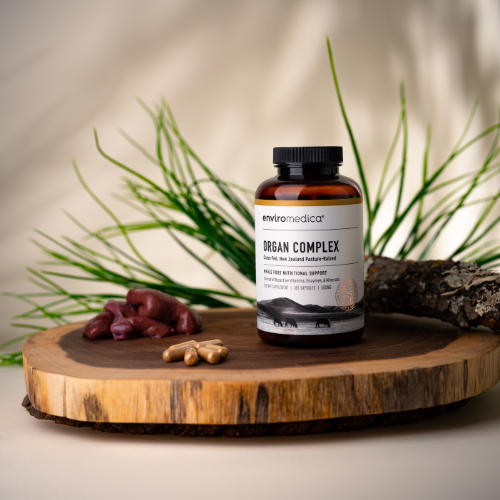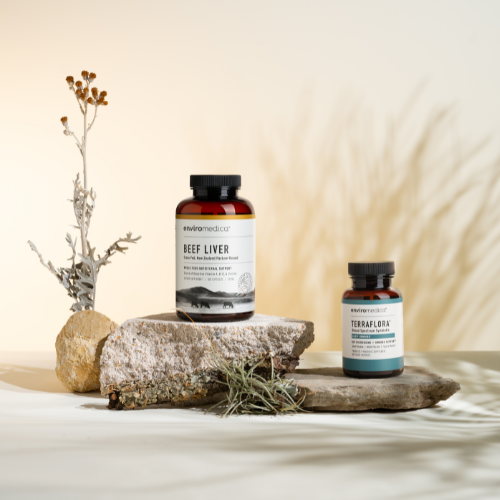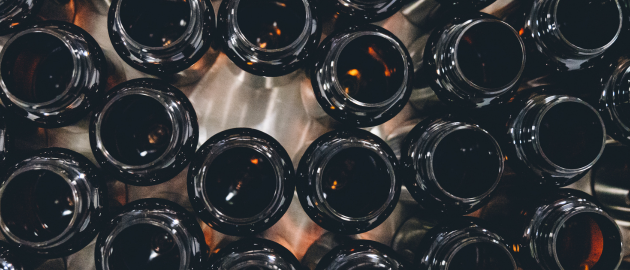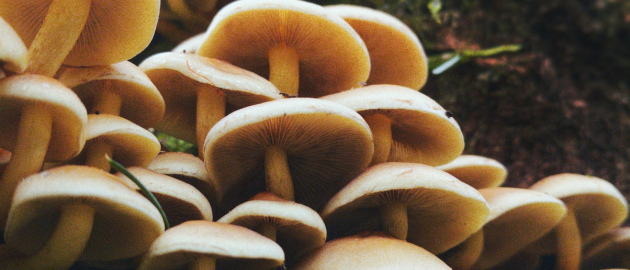The human microbiome is not only an integral part of our biology but fundamental to our individual health and the survival of our entire species. These microscopic communities can be both fragile as well as resilient – their formation and balance shifting in response to our lifestyles and exposures beginning even before birth.
Much like our journey to adulthood, puberty signals an end to the most significant changes and growth that will occur within our microbiome, after which it solidifies to a composition that will more or less remain with us throughout our lives.
That being said, there are still a plethora of factors that continue to affect this composition – some of which are beneficial, and others that will not only deplete your microflora but may also cause irreparable damage to your microbiome.
This disharmony in our microbiome (dysbiosis) has been implicated in countless conditions ranging far beyond digestive disorders, touching nearly every aspect of our biology.
And with recent studies exploring our microbiome in more detail, the list of factors found to negatively impact our microorganisms is growing. These factors include genetics and gene expression, environmental toxins, drugs and alcohol, cosmetics, chemotherapy, and even stress.
ANTIBIOTICS AND GUT BACTERIA
It should come as no surprise that one of the most pervasive threats to our microbiota is antibiotics. In fact, research has shown that even with transient usage, these drugs can result in irreversible damage to our microbial composition – especially early on in life.
We are affected by both the antibiotics we take ourselves, and those utilized in agriculture. Their continued heavy use comes with an additional growing threat. Rapidly evolving superbugs such as Methicillin Resistant Staphylococcus Aureus (MRSA) and Clostridium difficile1 represent the biological repercussions of the overuse of antibiotics, and can present a challenge to even the most hardy gut flora. What’s worse, not only have these strains developed resistant genes, but scientists have now discovered similar genes have evolved amongst our own microbiome.
Studies have shown that pervasive changes to the human microbiota result from antibiotic treatment and that resistant strains can persist for years. Additionally, culture-independent functional characterization of the resistance genes from the microbiome has demonstrated a close evolutionary relationship between resistance genes in the microbiome and in pathogens.2
ANTIBACTERIALS
Prescription drugs aren’t the only source of potential hazards to the microbiome. Over the years, the number of cosmetic and household products that contain antibacterial agents or other ingredients harmful to microflora has increased exponentially – so much so that it is often incredibly difficult for the average consumer to find safe alternatives.
Germ killing” ingredients such a triclosan are found in more items than most consumers are aware including dental care, kitchenware, clothing, and even bedding. Despite its widespread usage in these products, however, only in recent years has triclosan received the necessary attention from regulatory agencies who have begun to explore its potential for negative health repercussions and creating antibiotic resistance.
STRESS AND GUT DIVERSITY
Chronic stress is pervasive and may one day be known as the defining illness of our age. A clear contributor to the disruption and degradation of a healthy gut microbiome, social stressors have been found to directly impact the stability of our microbiota and lead to bacterial translocation.
Stressor exposure significantly changed the community structure of the microbiota, particularly when the microbiota were assessed immediately after stressor exposure. Most notably, stressor exposure decreased the relative abundance of bacteria in the genus Bacteroides, while increasing the relative abundance of bacteria in the genus Clostridium 3
What is more, stress disrupts the central nervous system and thereby the bidirectional communication between the brain and gastrointestinal tract, better known as the gut-brain axis4.Though being the complementary system that it is, our gut microbiome plays a role in stress-responsivity, behavior, and other aspects of our biology tied to our central neurochemistry.4,5
There is now an expanding volume of evidence to support the view that commensal organisms within the gut play a role in early programming and later responsivity of the stress system.6
Nonetheless, any disruption to the balance of microflora in the gut can adversely affect this critical pathway and lead to a host of mental health issues.7
INTESTINAL FLORA IMBALANCE: A DEFICIENT MICROBIOME
Beyond antibiotic resistance, our use of antimicrobials to cleanse away what we see as harmful trespassers is actually doing more harm than good.
While we have been operating under the mistaken conclusion that all exposure to microbes is harmful to our health, more and more evidence indicates that the opposite is true – that these exposures are in fact a necessity and critical to forming a robust immune system. Now that we have become more intimately acquainted with the role our microflora play in our health and biology, we have begun to connect the dots between the upsurge in over-sanitizing our environment in recent decades and a multitude of conditions.
A 2013 article in the New York Times hypothesized that deficits in our microbiome may be the cause of of the current allergy epidemic, noting that asthma and allergic disease increased two to threefold in the late 20th century, as exposure to a diverse range of microbes fell significantly.
This theory lines up with studies that have suggested that, the timing of exposure to certain microorganisms can influence our development and may have long term implications on health. This is true not only of organisms residing in the gut but also to non-resident and even pathogenic microorganisms. Not surprisingly, a commonality emerged amongst their findings illustrating that as exposures go, the earlier the better8 when it comes to our microbiome.
Although we are still a long way from truly comprehending the full scope of our microbiome and its symbiotic role in our biology, it is abundantly clear that it must become a priority – not only for our own health but the health of future generations.
While we turn to modern medicine to unravel its secrets, as individuals our responsibility is to build, protect, and cultivate a relationship with our gut microflora.
Article Contributed By Dr. Grace Liu of The Gut Institute
About the Author:
Grace Liu, PharmD, AFMCP is a functional medicine practitioner and frequent speaker at conferences such as the Ancestral Health Symposium and Paleofx. She leads a popular podcast, Gut Guardians and can be found on the web by her nickname, “The Gut Goddess”.
While Dr. Grace’s expertise is in the pharmaceutical world, she explores the various scientific, nutritional, and pharmacological ins and outs of optimal health through The Gut Institute and her private practice. Her training includes 4 years in plant biology, bachelor in nutritional science and food science, doctorate in pharmacy, and Crossfit Nutrition Certified by Robb Wolf (and Nicki Violetti).
Dr. Grace is available for private consultations. Contact her at The Gut Institute.
References
- 1. http://jid.oxfordjournals.org/content/197/3/435.short
- 2. http://www.sciencedirect.com/science/article/pii/S1369527411000890
- 3. http://www.sciencedirect.com/science/article/pii/S0889159110005295
- 4. http://onlinelibrary.wiley.com/doi/10.1111/j.1365-2982.2010.01664.x/full
- 5. http://jpp.krakow.pl/journal/archive/12_11/pdf/591_12_11_article.pdf
- 6. http://www.sciencedirect.com/science/article/pii/S0306453012000935
- 7. http://link.springer.com/chapter/10.1007/978-1-4939-0897-4_13#page-1
- 8. http://journals.lww.com/co-allergy/Abstract/2012/10000/The_farm_effect,_or___when,_what_and_how_a_farming.5.aspx












